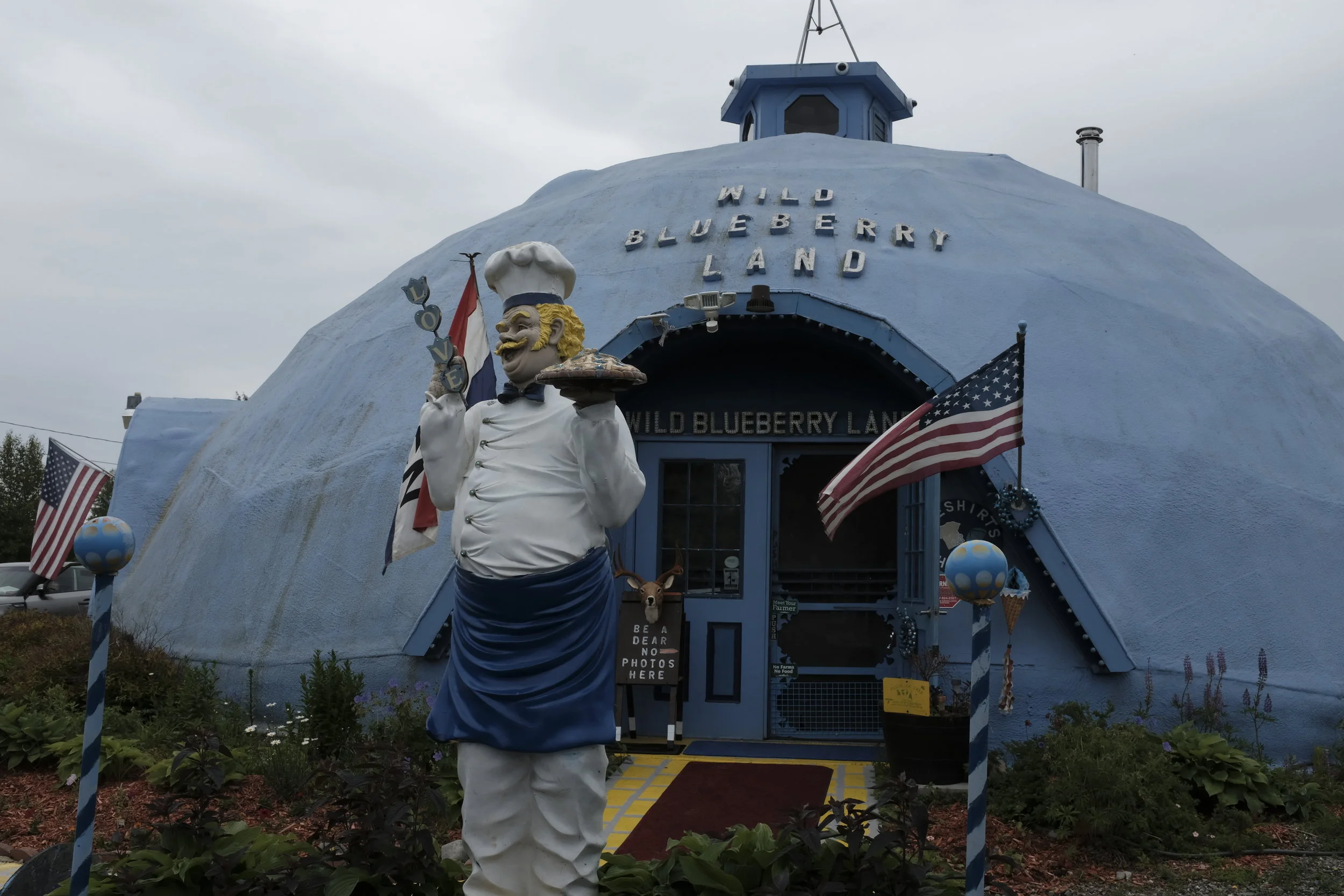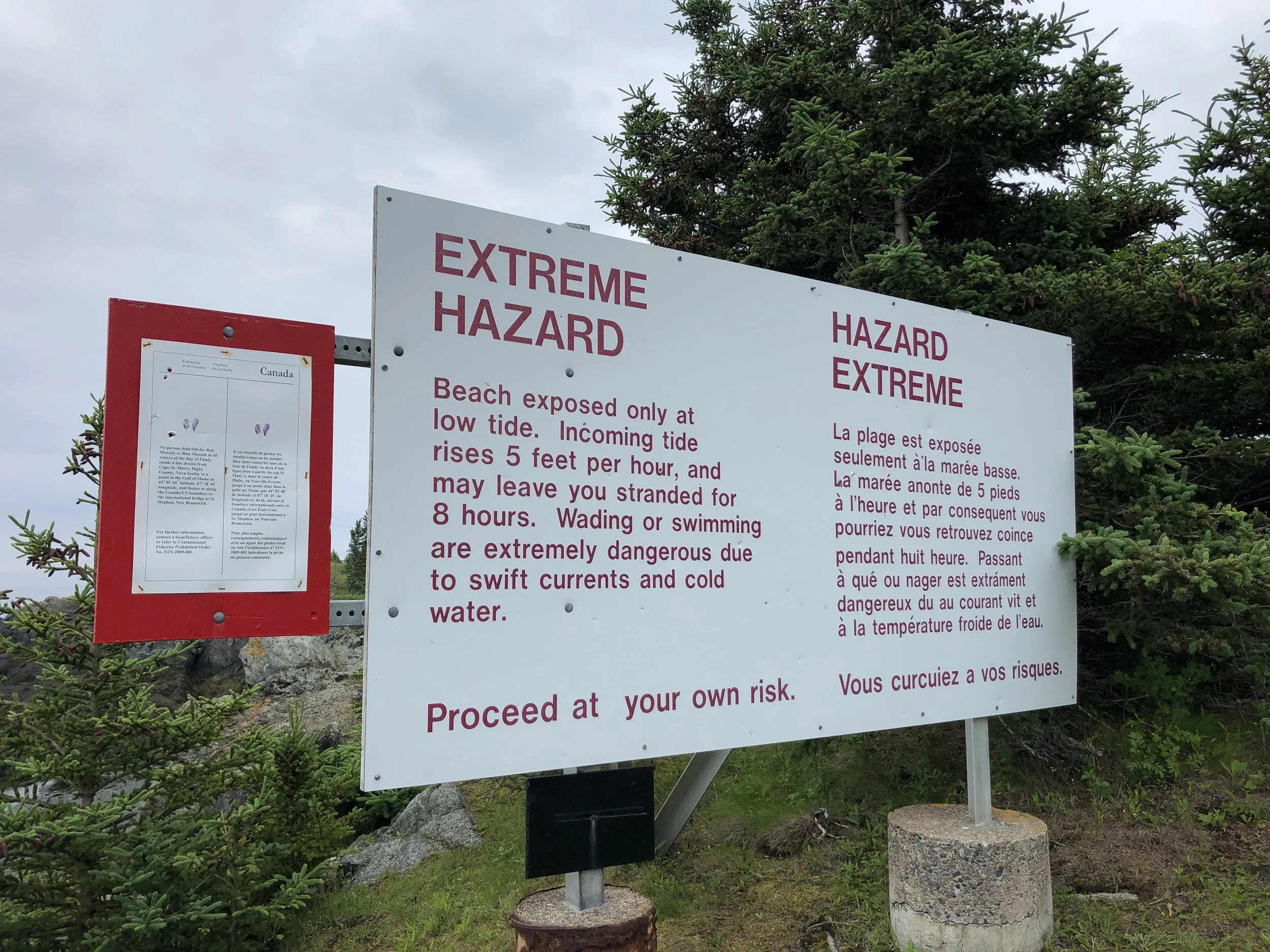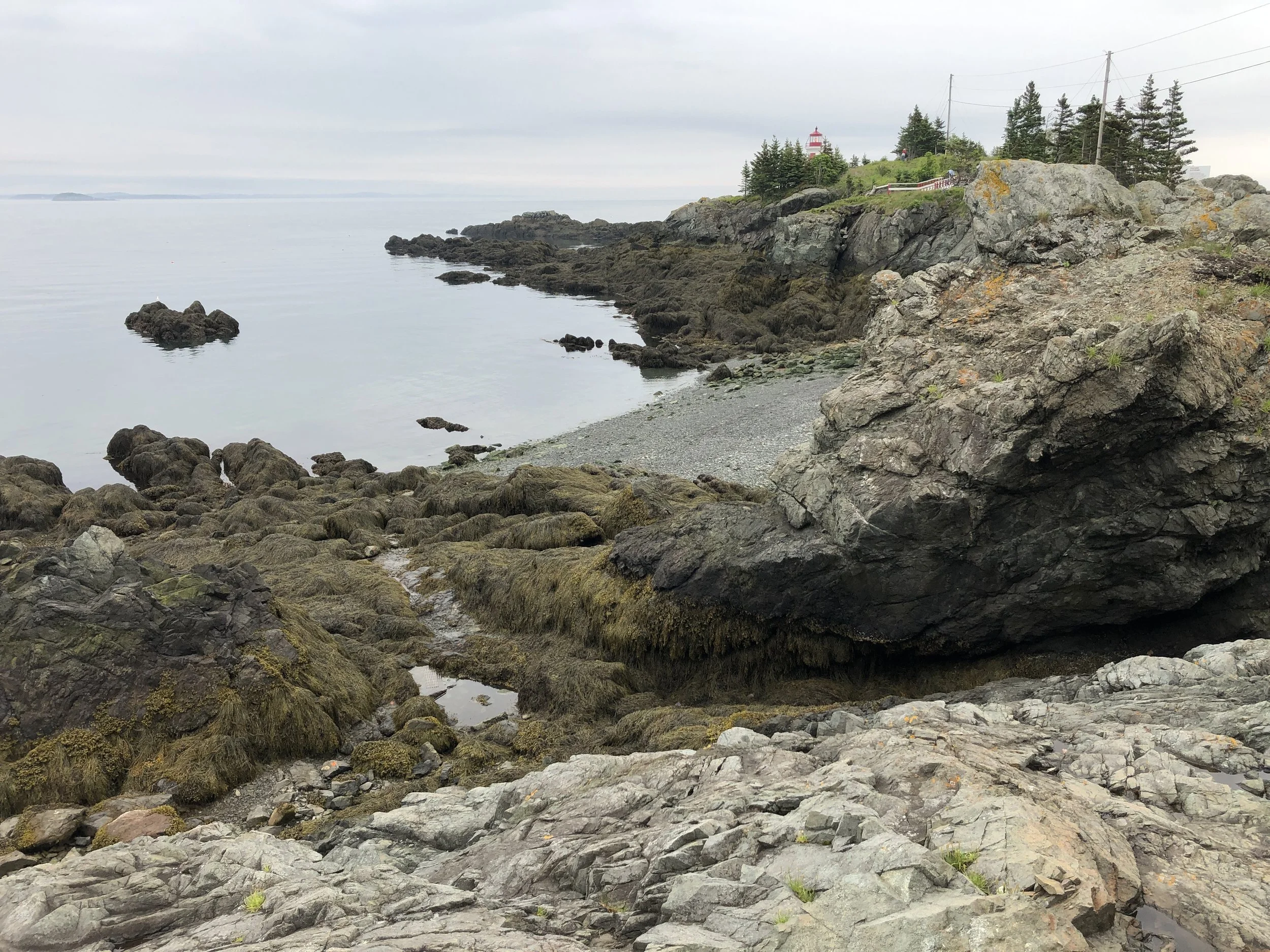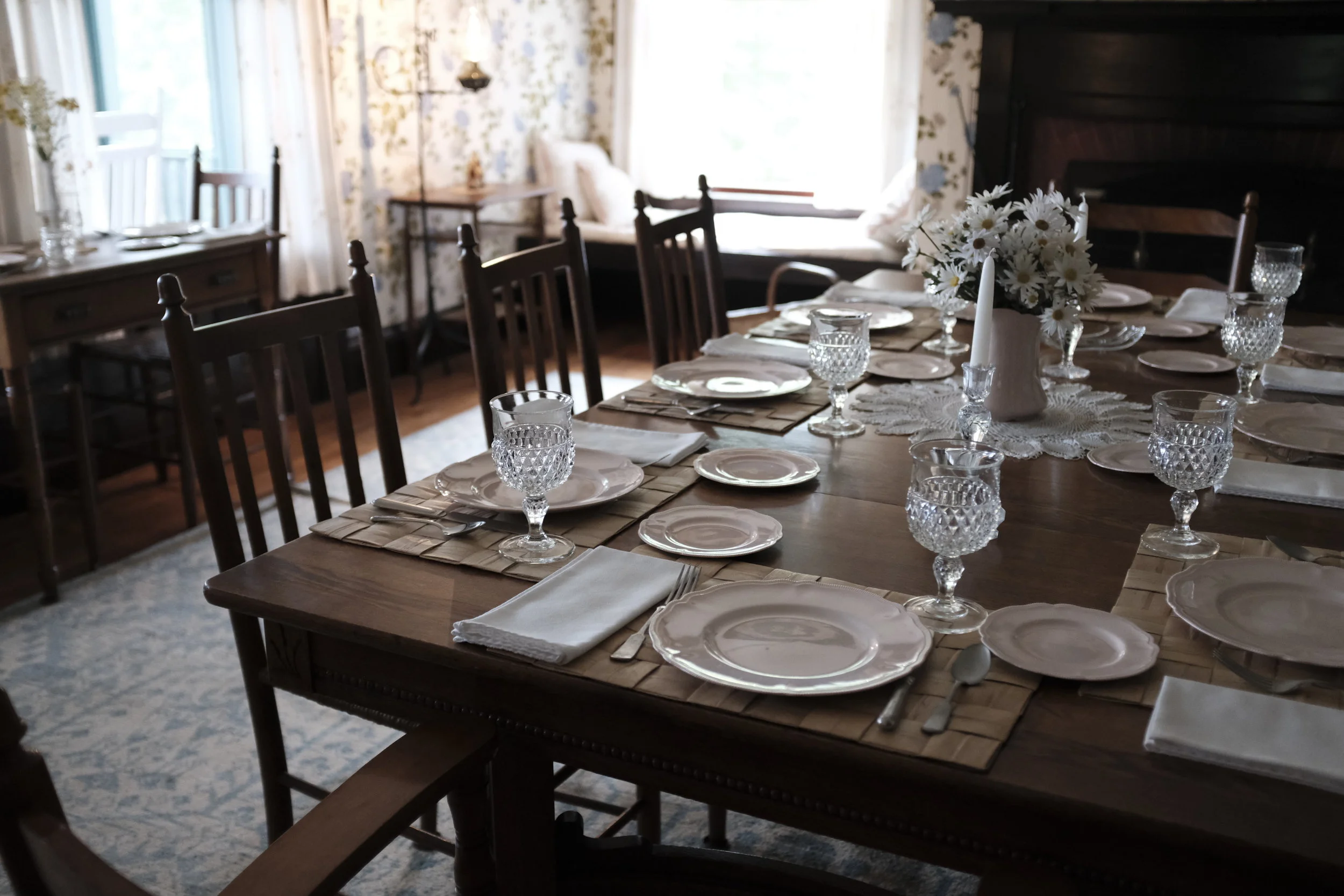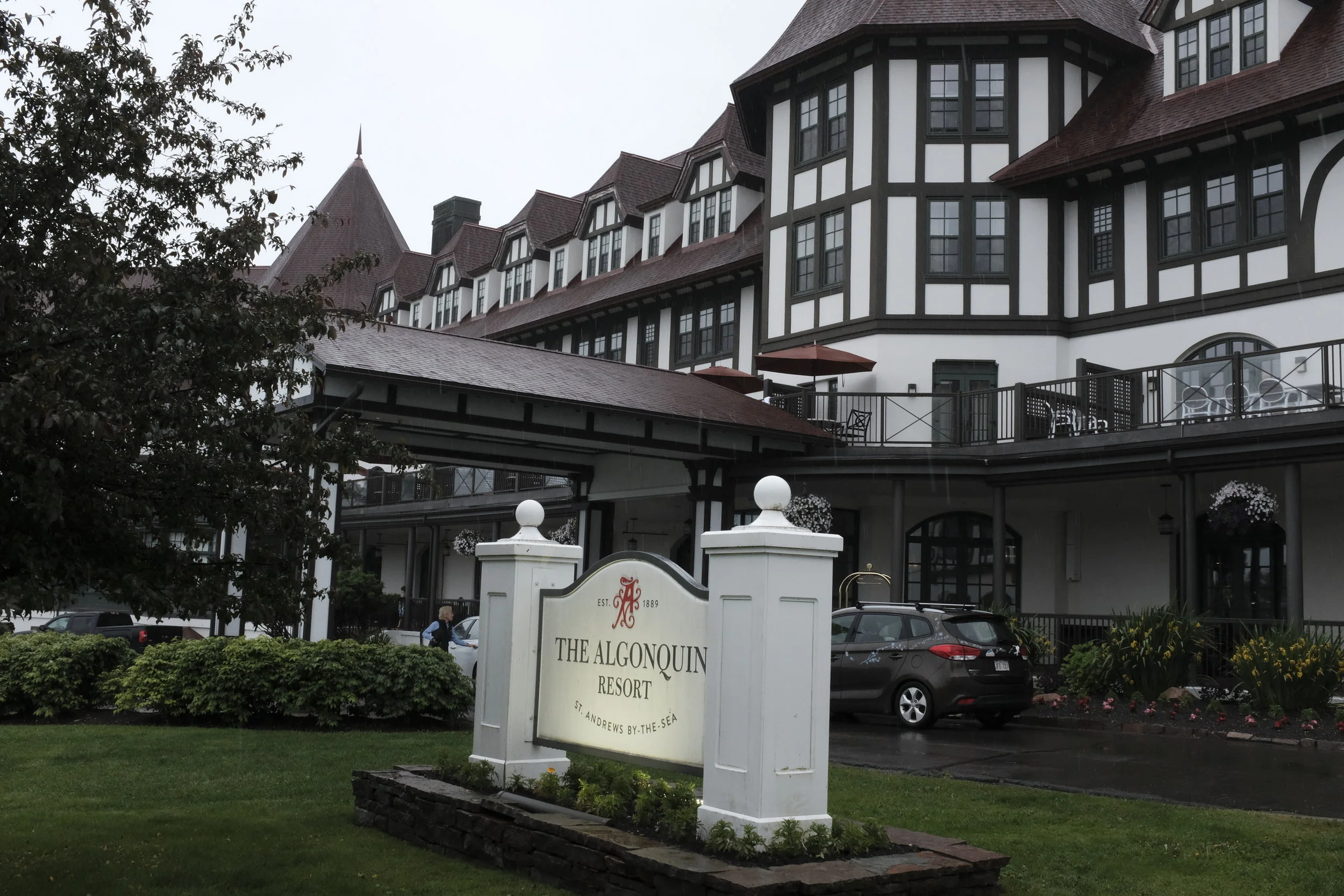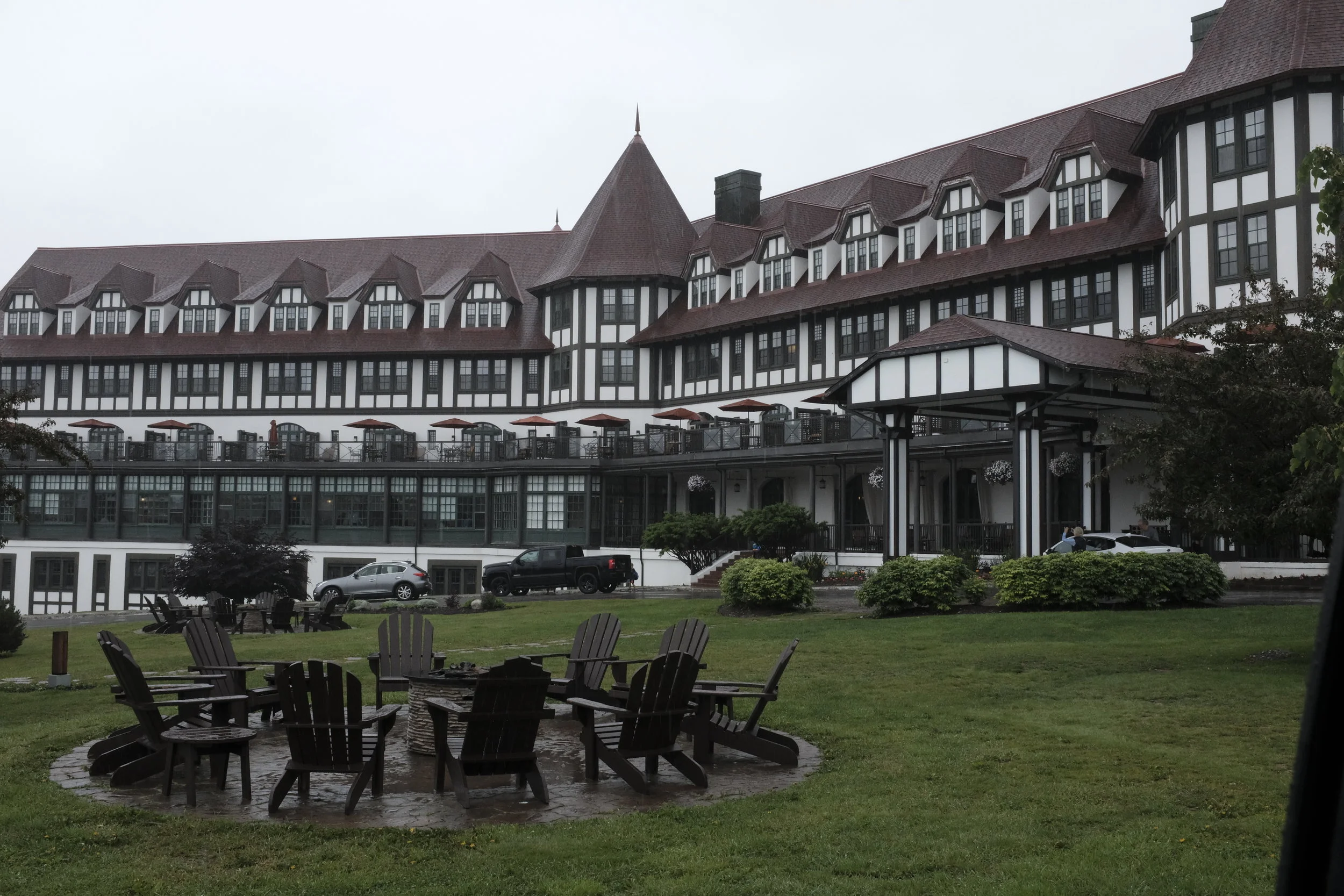Road Trip, Day 5: Campobello Island
DAY FIVE: AT A GLANCE
Starting Point: Bar Harbor, Maine
End Point: St. Andrews-By-The-Sea, New Brunswick, Canada
Starting mileage: 188,698
Ending mileage: 188,890
Daily total (miles): 192
Trip total (miles): 595
Today marked Day 5 of our trip and our last day in the States for about two weeks. While our morning would begin in Maine, we’d be crossing into Canada today (twice, actually, but more on that later).
We began our day with a short walk from the Bar Harbor Manor to Jordan’s Restaurant on Cottage Street in Bar Harbor, Maine (not be confused with the Jordan Pond House within Acadia National Park). But just as the Jordan Pond House is famous for its popovers, Jordan’s Restaurant is famous for its blueberry pancakes and blueberry muffins. While I haven’t tried the muffins, I can vouch for the pancakes. Before leaving town, we stopped into Hannaford to grab a six-pack of Atlantic Brewing Company’s Old Soaker Root Beer for the road. We packed up the van, and we were on our way.
Route 1 to Lubec, where we’d be crossing over to Campbobello Island, is a pretty boring drive without a whole lot to see...except, of course, Wild Blueberry Land! Having stopped here years ago on a day trip from Acadia, we couldn’t resist a return visit—and we picked up a small jar of blueberry spread, which, we learned, contains more blueberries and far less sugar than jam—good to know!
One of the main points of interest on this route is West Quoddy Light, site of the easternmost point in the continental United States. Given that we’ll be staying near the light on the back end of this trip, we decided to not make the detour on this end. So, stay tuned for Day 20 for details on that!
We crossed over to Campobello Island (and had the absolute nicest Canadian border patrol agent) around 2:30 ADT (the Maritimes are one hour ahead of Eastern Standard Time). I had added Campobello to the itinerary for two main reasons: to visit Roosevelt Campobello International Park (I’m a little bit of a history geek and have long admired both FDR and Eleanor Roosevelt) and to visit Head Harbour Light, which can be accessed at low tide.
We stopped into the visitor’s center at Roosevelt Campobello International Park, where we picked up a map of the island and talked to one of the staff members to gather the overall lay of the land. Given the time, we decided to drive over to Head Harbour Lightstation first. The lightstation, also known as East Quoddy Lighthouse, is the second oldest light in New Brunswick and accessible only at low tide. So, visitors have about a four-hour window to make the walk across a very narrow trail through slippery rocks and up a few iron ladders—all of which are underwater at high tide. The reward? Entry to (and inside, if you’ve paid extra) the lightstation with its distinctive red St. George cross. The cost to cross over is $5/person; an additional $10/person will allow entrance into the lightstation house and tower. We opted for both.
Just past the ticket booth (shed), the view of Head Harbour Lightstation
We can’t say we weren’t warned…
The walk was a bit tricky in spots; the wet rocks provided little stability and reaching down to steady myself on other rocks didn’t help much, as all of the large rocks were covered with seaweed.
At high tide, none of this—the only away across—would be exposed/accessible.
The “trail” (iPhone shot, as my cameras were firmly secured at this point!)
We made it safely across the rocks, down one ladder, and up two others—and the lighthouse, built in 1829, was worth seeing close up and inside. This was also our first time seeing what a keeper’s house looked like, so that was pretty cool. The house, built in 1840, has been restored with period pieces to give visitors a sense of what the house might have looked like. Prior to that house being built, the keeper and his family lived in the lighthouse itself. I’ve always romanticized being a lighthouse keeper or living in a lighthouse; it’s easy to forget how isolating it also must be—especially at a light like this, with safe passage determine by the tides. Fun fact: the teen staffing the light that day has to walk across twice a day for his shift. He’s never gotten stranded (I asked), but others have!
One of the restored rooms in the keeper’s house (1840)
I’m only smiling because this was the last ladder to climb on the return trip—which means I haven’t sprained an ankle or broken a camera!
The return trip across seemed a little bit easier (isn’t that always the case?). By now, it was nearing 4:30, and the Roosevelt Cottage closed at 6. Luckily, we still had plenty of time to tour the cottage and take in the exhibits at the visitor’s center. Unfortunately, however, we didn’t have time to walk the many trails on the property or drive the park’s carriage roads. The visitor’s center focuses on the long and friendly (still??) relationship between the United States and Canada, focusing on the bridges, agreements, and goodwill built between presidents and prime ministers (I’ll leave out my political commentary; suffice it to say that I felt nostalgic those days of goodwill and alliance).
The park’s main attraction is Roosevelt Cottage, the summer home of Franklin and Eleanor Roosevelt. FDR and his family had vacationed each summer on Campobello Island, though that home (as well as others) has since been demolished. Built in 1897, the Roosevelt Cottage is massive, with 34 rooms, including 18 bedrooms and six bathrooms. According to the tour guide, 6 of the bedrooms were for the servants, 6 for guests, and 6 for the Roosevelt family. There are also 76 windows and 7 fireplaces (this, according to the website—I didn’t count).
Roosevelt “Cottage”
The view from the back porch looks across Friars Bay to Maine
One of the rooms at the front of the cottage, at the start of the tour. Throughout the home are nautical elements—no wonder, as FDR spent his entire childhood on the waters surrounding Campobello and was later Assistant Secretary of the United States Navy (1913-1920).
The formal dining room; unfortunately, where I stood to take this shot didn’t allow for inclusion of the giant megaphone Eleanor used to summon her children for meals!
One of the most poignant sights is the master bedroom—the bedroom where Franklin Roosevelt experience the high fever and weakness in his legs that would later be diagnosed as infantile polio. He remained at Campobello for five more weeks, until he was off the island on a stretcher, ferried to Maine, and transported back to New York by train. This was 1921; FDR was 39—still seven years before he would go on to become governor of New York and 12 before he would become president. After stricken with polio, however, FDR only visited Campobello a handful of times.
The master bedroom
I’m a sucker for walking among relics, visiting historic homes, and retracing the actual footsteps of some of my heroes. I always leave inspired. Visiting the Roosevelt Cottage was no different. In this day and age, it was nice to be reminded of heroes of a past generation who fought for ideals and social justice. Roosevelt Campobello International Park is only 2.5 hours from Bar Harbor, Maine, and 2.5 hours from Saint John, New Brunswick. The park is free—and absolutely worth the visit. Just make sure to bring your passport!
We left the park around 5:30 p.m., went back through border crossing (back into Maine) and then traveled the hour-plus to Saint Stephen, New Brunswick, for our second crossing into Canada that day, and onto our final destination of the evening, the Algonquin Resort in St. Andrews-By-The-Sea. We had a nice, casual (and good!) dinner (lobster roll and lobster club, which we both split in half to share) at a local restaurant, The Gables. All-around, another full and fantastic day!
